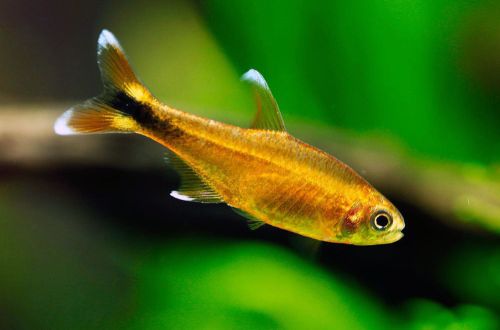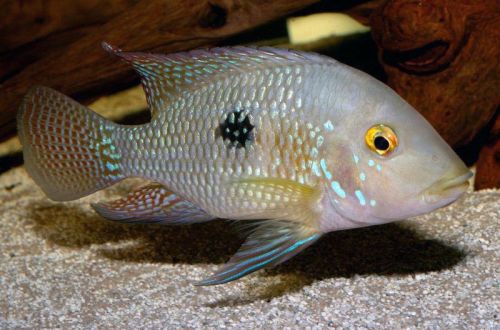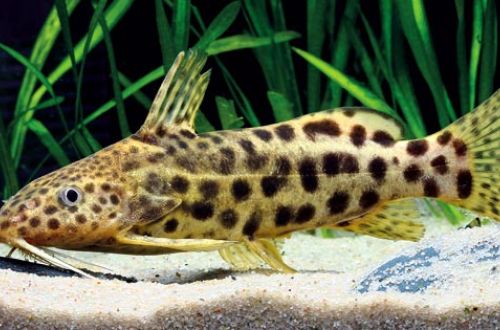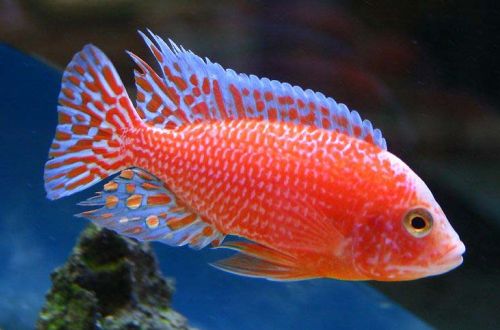
Hasemania
The copper tetra or Hasemania, scientific name Hasemania nana, belongs to the Characidae family. It is considered one of the best Tetras for the general aquarium due to its bright coloration, excellent compatibility with other popular fish, hardiness and unpretentiousness.

Cuprins
Habitat
It comes from the San Francisco River basin (port. Rio São Francisco) from the territory of Brazil. It occurs in small streams, rivers and channels of the main channel. The habitat experiences seasonal fluctuations in water levels, and the river itself flows through hilly, in places mountainous terrain.
Informatie scurta:
- Volumul acvariului – de la 70 de litri.
- Temperatura – 23-28°C
- Valoare pH — 6.0–8.0
- Duritatea apei – moale spre tare (5-20 dGH)
- Tip de substrat – orice
- Iluminare – slabă
- Apa salmastra – nr
- Mișcarea apei – moderată
- Dimensiunea peștelui este de până la 5 cm.
- Mâncare - orice aliment
- Temperament – pașnic
- Păstrarea într-un stol de cel puțin 8-10 indivizi
Descriere
Adults reach a length of about 5 cm. The color is silvery with a rich copper tint. Most of the caudal peduncle is dark, the tips of the tail and fins are white. Females are more modestly colored, the colors are not so saturated.
Alimente
Absolutely not pretentious appearance, the walls accept all types of popular food (dry, frozen, live). Their quality and composition largely affect the color of the fish, so strive to purchase food only from well-known and reputable manufacturers.
Întreținere și îngrijire, amenajarea acvariului
For a group of fish of 8-10 individuals, a tank of 70 liters or more will be required. Hasemania is not demanding in the design of the aquarium and adapts perfectly to various water conditions. The only recommendation is the presence of subdued lighting, because in bright light the color of the fish noticeably fades, becomes nondescript.
Comportament și compatibilitate
A peaceful schooling fish, kept in a group of at least 8–10 individuals, with a smaller number become somewhat aggressive, although with their size it is unlikely that they will be able to cause problems to their neighbors. Compatible with many well-known aquarium species, including viviparous, zebrafish, rasboras, corydoras catfish, some gourami, South American cichlids and others.
Creștere / reproducere
Apariția alevinilor este posibilă chiar și într-un acvariu comun, dar numărul lor va fi foarte mic și va scădea în fiecare zi dacă nu sunt transplantați într-un rezervor separat la timp. Toată vina este a peștilor adulți, pentru care alevinii sunt un mare plus la dietă.
In order to increase the chances of survival and somehow systematize the breeding process (spawning was not spontaneous), it is recommended to use a spawning aquarium, where sexually mature fish are placed during the mating season. Usually this is a small container with a volume of about 20 liters. The design is arbitrary, the main emphasis is on the substrate. In order to protect the eggs from being eaten (Tetra copper eats its own offspring), the bottom is covered with a fine-mesh net, or small-leaved plants or mosses (for example, Java moss). An alternative way is to place a layer of glass beads with a diameter of at least 1 cm. The lighting is subdued, a heater and a simple airlift filter are sufficient from the equipment.
Stimulul pentru începutul sezonului de împerechere este modificarea treptată a parametrilor apei din acvariul comun la următoarele valori: pH 6.0–6.5, dH 5–10 la o temperatură de aproximativ 28–30°C. Baza dietei ar trebui să fie alimentele congelate sau vii.
Observați cu atenție peștii, în curând unii dintre ei se vor rotunji vizibil - acestea vor fi femele umflate de caviar. Masculii vor începe să emită sunete asemănătoare cu croaiatul - aceasta este o caracteristică a acestei specii și vor da semne de atenție celor aleși. Pregătiți și umpleți rezervorul de depunere a icrelor cu apă din rezervorul comunitar. Pune femelele acolo, a doua zi o pereche de masculi mari care arată cel mai izbitor.
It remains to wait until spawning occurs, its end can be determined by females, they will “lose weight” greatly, and eggs will be noticeable among the vegetation (under a fine mesh). The fish are returned. The fry will appear within 24-36 hours, after another couple of days they will begin to swim freely in search of food. Feed with specialized microfeed.
Bolile peștilor
Un biosistem echilibrat de acvariu cu condiții adecvate este cea mai bună garanție împotriva apariției oricăror boli, prin urmare, dacă peștele și-a schimbat comportamentul, culoarea, apar pete neobișnuite și alte simptome, verificați mai întâi parametrii apei și abia apoi treceți la tratament.





